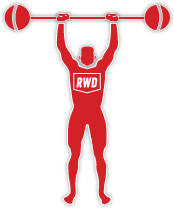THE POWER BAND SCRUM RECOVERY EXERCISE
The INJURY
Vincent Grimbergen, Captain Dutch National Team.

In February 2016, through incorrect foot placement while sprinting I incurred a stress fracture of my left foot. This lead to many CT and MRI scans. In addition to the fracture it also became apparent that I had bone spurs in my ankle joints. Professor Kerkhoffs advised that I needed an operation to clean up the joints.
After the operation I had two weeks rest where I was not permitted to load my ankle in any way. I began my rehabilitation programme, under the guidance of Ross Watson, in the third week after the operation. This was a gentle process to begin with and as the joint healed we ramped up the intensity.
The first 6 weeks of the rehab focussed on mobilising the joint and activating the glute, hip, thigh and calf muscles.
The second 6 weeks involved an increase in intensity again and focussed on improving my muscular endurance. This involved a series of exercises all built upon 3 sets of 15 repetitions. During this programme I underwent ankle mobility treatment from Ross twice a week.
The third 6 week block was devoted to my running form and technique, coupled with hypertrophy (building muscle) of the entire body. This involved exercises built upon 4 sets of 8 repetitions. In this phase we also did “rugby specific” exercises such as the POWER BAND SCRUM.
The RECOVERY
Introduction
The key to an effective injury recovery in Rugby is beginning at the END. In planning the recovery programme we look at the optimum conditioning required by the athlete, when fully fit and injury free, to compete at the desired level. Then decide on a recovery strategy to achieve this.
One needs to take a number of factors into consideration.
Initially we need to determine which external stresses does the damaged tissue and entire body of the athlete need to withstand when fully fit. Then it is important to determine the weakest links in the body and include these in the recovery programme. Ultimately we want the athlete to be able to perform better post injury than prior to it. This means addressing indirect weaknesses as well as the injury itself.
Goal
With the Power Band Scrum our goal is to stimulate awareness in the athlete as to how their core stability must be used in a “sport specific” exercise that is actually more difficult than scrumming in reality. Prior to this exercise the injured athlete underwent an extensive core stability training programme.
Further, the athlete in performing the Power Band Scrum, can “rediscover” their optimal ankle, knee and hip angles whilst maintaining a correct back and body position.
Essential is that the damaged tissue is strengthened and stabilised in such a way as to ensure that the angles required in training or matches are achieved.
This exercise makes demands on all aspects of basic mobility, stability and strength.
The Typical Recovery Session
Each session begins with a sound warm up. This is followed by raising the heart rate and then focusing on mobility exercises for the entire body. Extra attention is placed upon flexibility and mobility of the hips, knees, ankles and upper back.
We then move on to activating core stability and pay particular attention to the glutes. This is important as the stability and strength required to perform the exercise is generated here.
To prepare the athlete for the Power Band Scrum a number of exercises are performed with the Power Band Scrum to finish:
- Deep Goblet Squats with mini band.
- Power band one arm rows.
- ICM Dumbbell shoulder press.
- Kettlebell hoover and drags.
- Power Band Scrums.
The Power Band Scrum
In performing the Power Band Scrum we focus on setting the scapula position correctly from a vertical push and a horizontal pull. The athlete must concentrate power towards maintaining a strong, solid, neutral spine and resist flexion, extension and rotation. Whilst holding the position the athlete applies power through hip dominant strength.
All these aspects come together to provide the athlete with everything required to function optimally in the scrum.
Ross Watson Physiotherapy and Sports Performance
Hello I’m Ross Watson. My sporting background lies in Rugby and American football. I am a physiotherapist, manual therapist and performance coach. Amongst other roles I’ve been the Physiotherapist and Performance Coach for the Dutch National Water Polo Team for 4 years and a Physiotherapist and Performance Coach for 2.5 years at Ajax Football Club. I’m now running my own business here in Leiden and am the Strength & Conditioning Coach at Leidse Rugby Club DIOK for the past 3 years.
I specialise in individual performance training, sports injuries, post-operative rehabilitation, return to sport and return to competition.
My work is founded upon the imperative that athletes must work to strengthen the weakest links in their body during the injury period. The ultimate goal being that the athlete performs better at training and in matches post injury prior to it.
For more information and see what we’re up to “Join me in RWD”!.


 Vincent Grimbergen
Vincent Grimbergen
